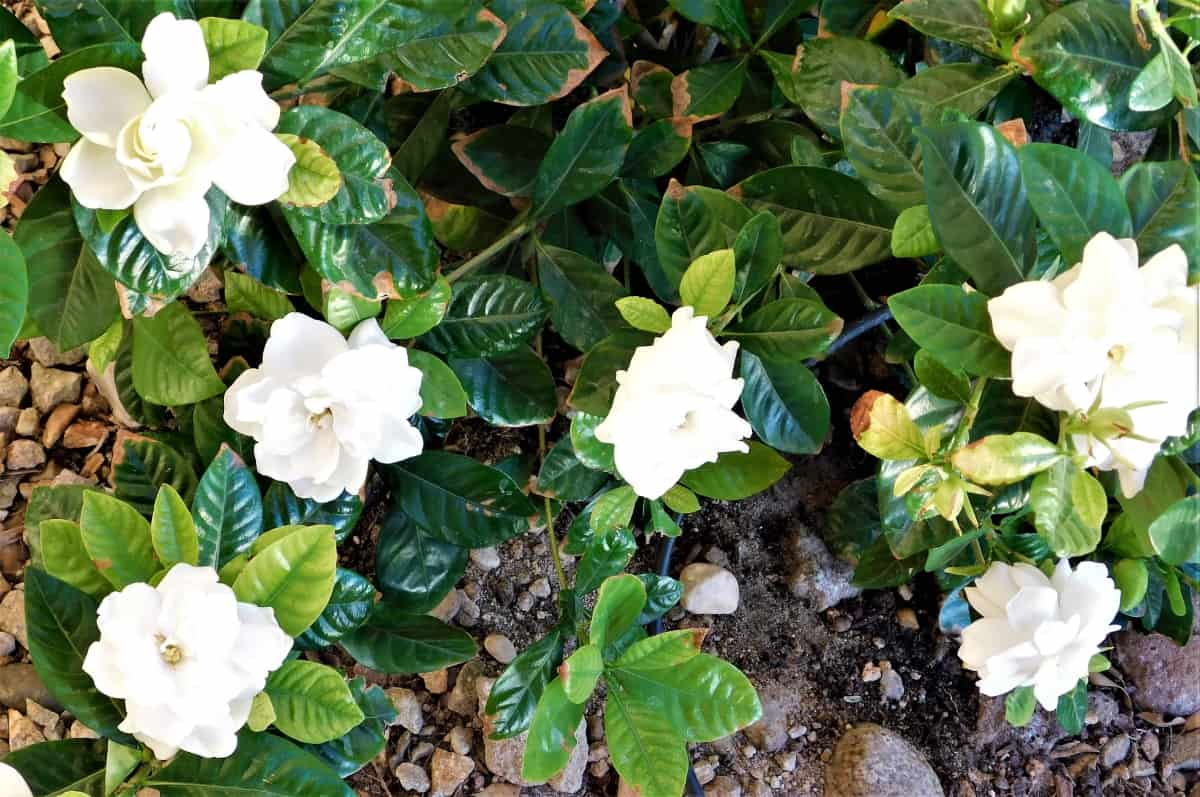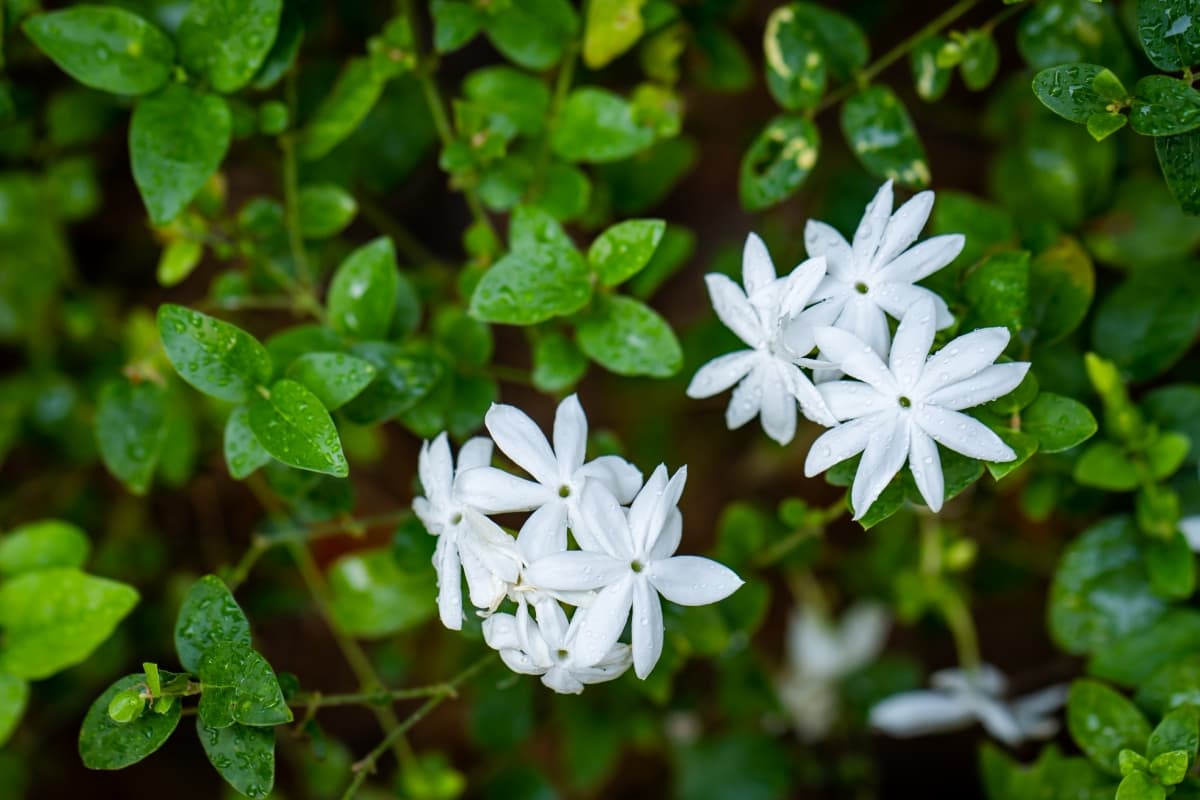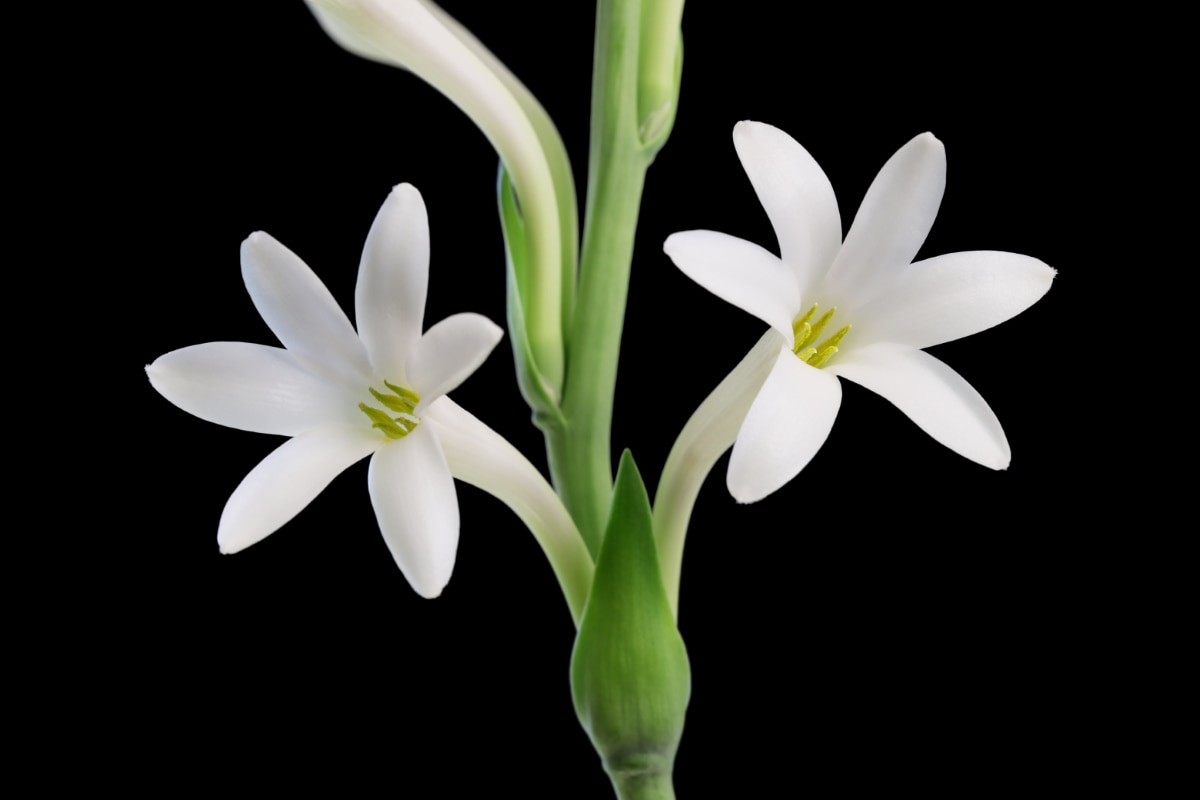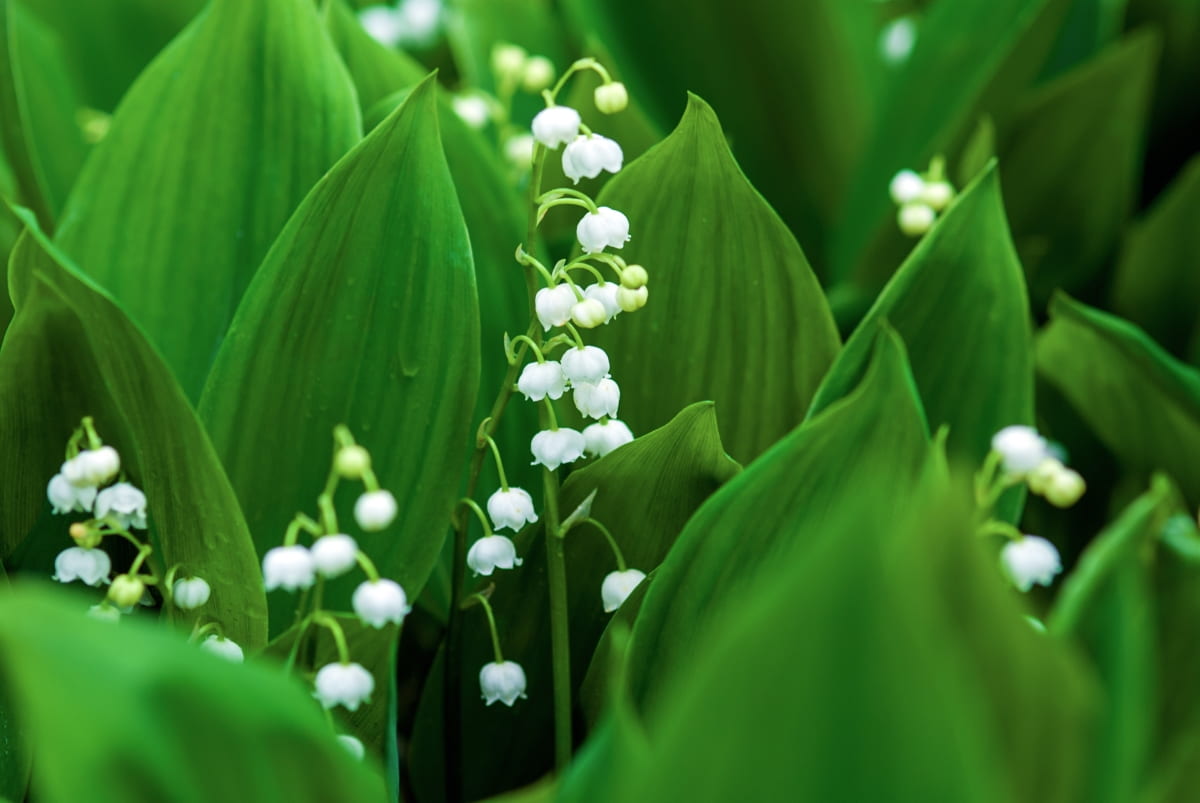Embrace the enchanting world of fragrant blooms by cultivating scented flowers in your Indian home garden. Elevate your outdoor space with nature’s aromatic treasures, creating a sensory haven. In this guide, we explore the top 10 scented flowers that thrive in India’s diverse climates.
From the sweet allure of Jasmine to the exotic fragrance of plumeria, these blossoms add visual appeal and also fill the air with captivating scents. Uncover the secrets of cultivating these aromatic gems, transforming your garden into a fragrant paradise that engages both sight and smell. Dive into the joy of gardening and let the aromatic symphony unfold.
Top 10 Scented Flowers to Grow in Home Gardens
Fragrant Gardenia (Gardenia Jasminoides)
Gardenia jasminoides, commonly known as Fragrant Gardenia or Cape Jasmine, is a mesmerizing flowering plant celebrated for its intoxicating fragrance and elegant white blooms. Originating from Asia, this evergreen shrub is a favorite in Indian gardens due to its ability to thrive in warm climates.

The waxy, ivory flowers release a sweet scent, creating a calming atmosphere in the garden. The glossy, dark green leaves enhance the plant’s visual appeal. In addition to its aromatic allure, Gardenia is revered for its cultural significance in Indian traditions, often symbolizing purity and beauty.
Jasmine (Jasminum Officinale)
Jasminum officinale, commonly known as Jasmine, is an iconic and highly prized flowering plant renowned for its fragrant, star-shaped white blossoms. A staple in Indian gardens, Jasmine holds cultural significance, symbolizing love, purity, and sensuality. Its captivating scent makes it a popular option for garlands, essential oils, and perfumes. The plant’s vines can be trained on trellises or arbors, creating a charming and aromatic canopy.
In case you missed it: How to Grow Mogra/Jasmine from Cuttings: DYI in 10 Simple Steps

Thriving in warm climates, Jasmine is well-suited to Indian conditions, gracing gardens with its intoxicating fragrance, especially in the evening when the blooms release their scent most intensely. Beyond its ornamental value, Jasmine is deeply woven into Indian traditions, playing a role in religious ceremonies and festivals.
Tuberose (Polianthes Tuberosa)
Polianthes tuberosa, commonly known as Tuberose, is a captivating flower celebrated for its intense and exotic fragrance. Native to Mexico, Tuberose has found a second home in Indian gardens, thriving in warm climates and well-drained soil. Characterized by clusters of waxy, tubular flowers, Tuberose emits a powerful, sweet scent that intensifies during the night.
In case you missed it: How to Use Neem Oil on Tuberose Plants: Best Natural Way to Get Rid of Pests on Tuberose Plants

Its elegant, elongated blooms make it a favorite for floral arrangements and garlands, often used in traditional ceremonies and celebrations. Tuberose is not only a sensory delight but also a symbol of purity and sensuality in Indian culture. Adding this fragrant beauty to the home garden brings a touch of luxury and a heady aroma that lingers in the air, making it a cherished choice for those seeking an enchanting olfactory experience in their Indian gardens.
Chrysanthemum (Chrysanthemum Morifolium)
Chrysanthemum morifolium, commonly known as Chrysanthemum or Mums, is a vibrant and versatile flowering plant cherished for its diverse colors and shapes. Originating from Asia, particularly China, Chrysanthemums have become an integral part of Indian gardens, bringing a burst of color and elegance.
While admired for its visual appeal, Chrysanthemum also boasts a mild, sweet fragrance, adding a subtle charm to the garden. In India, these blooms are often associated with festivals and are used in religious ceremonies. Beyond their cultural significance, Chrysanthemums contribute to a fragrant and visually stunning home garden, making them a popular choice for gardeners seeking a balance of beauty and subtle scent.
Lily-of-the-Valley (Convallaria majalis)
Convallaria majalis, commonly known as Lily-of-the-Valley, is a delicate and enchanting flowering plant renowned for its tiny, bell-shaped, white flowers and sweet fragrance. Native to temperate climates in Europe and Asia, Lily-of-the-Valley has found a place in Indian gardens, particularly in cooler climates.
In case you missed it: How to Grow and Care for Lily of The Valley

The plant’s dainty, arching stems adorned with nodding blossoms emit a fresh and captivating scent, creating a serene and peaceful atmosphere. Despite its small size, Lily-of-the-Valley holds cultural significance, symbolizing purity and humility in various traditions. This shade-loving perennial is often planted in borders, under trees, or in containers, providing an elegant touch to garden landscapes.
Sweet Pea (Lathyrus Odoratus)
Lathyrus odoratus, commonly known as Sweet Pea, is a charming climbing plant celebrated for its vibrant and fragrant flowers. Native to Italy, Sweet Pea has become a popular choice in Indian gardens, adorning trellises, fences, and archways with its cascading clusters of blooms. The flowers come in various colors, from soft pastels to bold hues, and emit a sweet fragrance that fills the air with a refreshing scent. With its climbing nature, Sweet Pea is ideal for vertical gardening, adding a vertical dimension to the garden landscape.
Magnolia (Magnolia x Soulangeana)
Commonly known as Saucer Magnolia or Tulip Tree, it is a breathtaking flowering tree with large, tulip-shaped blossoms that graces gardens. In early spring, before the emergence of leaves, the branches burst into a profusion of large, fragrant flowers in various colors, from pale pink to deep magenta.
The sweet scent of Magnolia x soulangeana adds a touch of sophistication to the garden, making it a favorite for those who appreciate both visual and olfactory beauty. With its distinctive cup-shaped blooms and glossy green foliage, this magnolia variety stands as an emblem of elegance, creating a picturesque display that captivates garden enthusiasts in India.
Jasmine Miniatura (Jasminum Multiflorum)
Jasminum multiflorum, commonly known as Jasmine Miniatura or Downy Jasmine, is a compact and versatile evergreen shrub renowned for its dainty white flowers and sweet fragrance. Native to India and Southeast Asia, this jasmine variety has found a special place in Indian gardens, serving as a popular choice for hedging, borders, and container gardening.
The small, star-shaped flowers bloom in clusters, covering the plant in a blanket of fragrant blossoms. With its glossy green leaves and a profusion of flowers, this jasmine variety adds a touch of charm to outdoor spaces. Its adaptability to various climates and low maintenance requirements make it a practical and enchanting choice for gardeners seeking a fragrant and visually appealing addition to their Indian home gardens.
Night-Scented Stock (Matthiola Bicornigera)
Matthiola bicornigera, commonly known as Night-scented Stock, is a captivating annual flowering plant celebrated for its sweet fragrance that intensifies during the evening hours. The small, four-petaled flowers bloom in clusters, releasing a delightful scent reminiscent of vanilla and cloves. Night-scented Stock is often cultivated in borders, containers, or mixed flower beds, creating a charming display that becomes particularly enchanting as the sun sets.
Beyond its ornamental value, this fragrant flower adds a sensory dimension to the garden, making it a favorite for those who appreciate the magic of an evening garden. The adaptability of Night-scented Stock to different soil types and its ease of cultivation make it an accessible choice for Indian gardeners seeking a fragrant and whimsical addition to their outdoor spaces.
Lavender (Lavandula Angustifolia)
Lavandula angustifolia, commonly known as Lavender, is a beloved and versatile perennial herb renowned for its fragrant blooms and aromatic foliage. The slender spikes of Lavender flowers, ranging in color from pale violet to deep purple, emit a soothing, herbal scent that adds a touch of tranquility to the garden.
With its silvery-green foliage and elegant blooms, Lavender is often used in borders, hedges, and containers, contributing to both ornamental and aromatic aspects of garden design. Beyond its visual and olfactory appeal, Lavender holds cultural significance and is valued for its medicinal properties in various traditions.
Conclusion
In conclusion, cultivating a fragrant garden in India offers a sensory symphony of beauty and aroma. From the intoxicating blooms of Gardenia and Jasmine to the exotic allure of Tuberose, each flower adds a unique charm to home gardens. Whether for cultural significance, visual appeal, or aromatic bliss, these top 10 scented flowers enhance the outdoor experience, transforming Indian gardens into delightful havens of nature’s finest fragrances.
- Feed Your Flock for Less: Top 10 Tips to Save on Chicken Feed
- Ultimate Guide to Ossabaw Island Hog: Breeding, Raising, Diet, and Care
- Hatching Answers: The Top 10 Reasons Your Chickens Aren’t Laying Eggs
- Eggs and Economics: Breaking Down the Cost of Raising Backyard Chickens
- Defend Your Greens: Proven Methods to Keep Iguanas Out of Your Garden
- Ultimate Guide to Cinnamon Queen Chicken: A Comprehensive Guide for Beginners
- Ultimate Guide to California Tan Chicken: Breeding, Raising, Diet, Egg-Production and Care
- Ultimate Guide to Marsh Daisy Chicken: Breeding, Raising, Diet, and Care
- 10 Types of Chicken Farming Businesses You Can Start for Profits